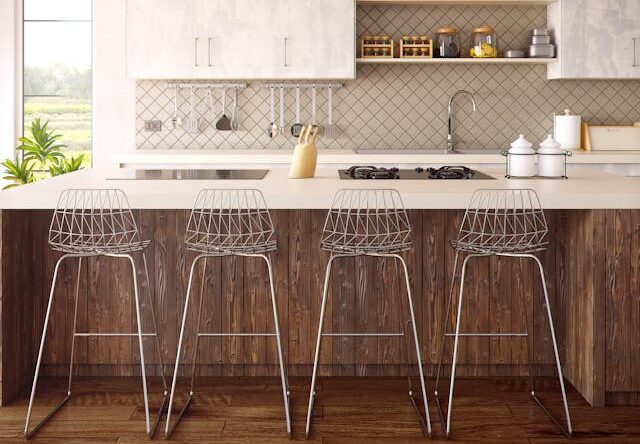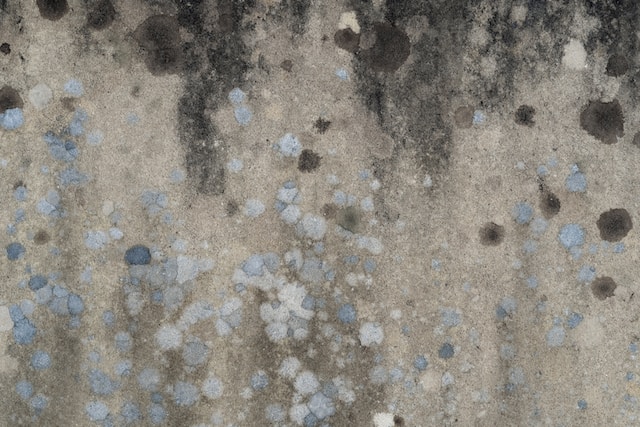Water Under Cabinets
Water damage creates serious problems throughout your home, but excess water is especially dangerous in porous wooden cabinets. It’s critical that you take care of wet cabinets as soon as possible to prevent mold growth and protect your family’s health.
A water damage restoration professional should be your first call when you wake up to a flooded kitchen, as we can ensure that your home’s structural integrity and air quality remain intact. Call PacWest Restoration at 503-746-6545 to tackle water-damaged kitchen cabinets before they become a total kitchen nightmare.
What Causes Flooding Under Cabinets?
Kitchen cabinets are vulnerable to water damage thanks to the sheer number of kitchen appliances that utilize water, such as fridges, sinks, and dishwashers.
A kitchen flood can come from numerous sources, including natural disasters or leaks from elsewhere in the home, which is why it’s critical to work with a water damage expert to identify the cause and develop a plan of attack that will mitigate the issue.
Overflows
Your kitchen sink utilizes a vast amount of water per day: washing dishes, filling pots, or simply grabbing a quick drink from the tap. This is great, but too much water can quickly become a serious issue, leading to kitchen flooding. Whether it’s simply forgetting to close the tap, a stopped-up drain that regurgitates water, or a clog that leads to a broken pipe, sinks frequently overflow and cause water to cascade throughout the kitchen.
The damage will be especially prevalent with the cabinets directly below the sink that house the water supply line, as they will get the brunt of kitchen floods from this water source.
Leaks From Pipes
All the appliances in your kitchen that use water have a water line attached to them: your sink, dishwasher, garbage disposal, and your refrigerator if you have an ice maker or water dispenser. A pipe leak may cause the water to run continuously, which will lead to water seeping into hardwood flooring and nearby cabinets. Frozen pipes may also burst, leading to a vast flooded area that can be difficult to dry.
Bad Seals or Connections
Sometimes, water damage is a slow and steady disaster caused by the degradation of the seals and connections that connect supply lines and pipes. Over time, water dissolves the materials making up the seals through mineral inclusions or the steady pressure of constant water flow, which leads to cracks or pinhole breaks.
When these seals aren’t checked and replaced on a regular basis, they allow small amounts of water to drip onto floors and into cabinets, which leads to water stains and mold growth.
Types of Water Damage to Kitchen Cabinets
Your kitchen cabinets are a good bellwether for overall water damage throughout the kitchen, which is why it’s important to keep a close eye on them. Watch for these warning signs so that you can act fast and seek help.
Mold Growth
Mold comes in a variety of colors, ranging from black, red, brown, orange, yellow, and white. On particle board, you may notice round or streaky discolorations, while wood may have dark smears that crumble when disturbed.
Paint Flaking Off
When moisture penetrates wood, it can get in between the paint and the surface, causing the paint to peel away and flake off. You might find small, tacky bubbles that peel off when you pull on them; if the water damage has dried, the paint will crack and start to flake.
Bubbling Wood
In addition to the paint bubbling and warping, you may also find the wood itself starting to bubble, particularly if you do not have solid wood fixtures. With laminate or particle board, the water seeps in between the layers and splits them apart, causing them to buckle.
Kitchen Cabinet Drying Process
It’s important to start drying out your cabinets as soon as possible in order to avoid serious flood damage. Follow these steps to protect your cabinets before you call a professional like PacWest Restoration.
If there is any standing water, shut off electricity and water in the area to avoid electrocution. Wear rubber-soled shoes and gloves any time you’re in the flooded kitchen, both to prevent electrocution and to keep yourself safe from the bacteria that is now coating every surface.
Empty Your Kitchen Cabinets
Firstly, pull everything out of the water-damaged space, including food, pots, pans, cutlery, and dishes. You will likely need to replace any food in the cabinet unless it was hermetically sealed, like cans; even then, you may want to toss it just to be on the safe side. Set everything from nearby drawers aside to be sterilized later.
Remove Cabinet Doors
Next, remove the doors from the cabinets and pull out any drawers in order to improve air flow within the cabinet itself. You will need to dry the doors separately, ensuring that they are fully dried before you replace them on the cabinet.
If you have a toe kick on your cabinets, remove them as well so that you can dry the floor underneath. Wrap the cabinet doors in towels to draw out as much as moisture as possible, then set them in front of a strong fan to blow away all the water.
Dry The Kitchen Cabinets
Open up the windows and rent an air mover to boost ventilation as you start to dry everything out. Don’t use your air conditioner, as this can draw mold particles into the vents and make you ill.
You’ll now want to sop up all standing water before moving on to the more delicate drying process. Depending on the extent of the flooding, you may only need paper towels, or you might need blankets, bath towels, and other fabrics, which will all need to be thrown in the washing machine to deep cleaned when you’re done.
You want to get as much water removed as possible before moving on to the next step. At this point, you can apply baking soda and one cup of white vinegar to the cabinets in order to forestall mold growth, then dry everything again. When your cabinets feel dry, you can begin dehumidifying.
Dehumidify
Lastly, you will need to draw out moisture from inside the materials with dehumidifiers, which pull water from the air to be disposed of. While it’s typically not possible to get everything completely dry with consumer-grade dehumidifiers, you can reduce your overall repair costs by boosting air flow and pulling water from the air so as to get everything as dry as possible before calling professionals.
Evaluate the Damage
It’s tempting to think that you can handle water damage on your own, but this can lead to serious problems down the line. A flooded kitchen should always be assessed by professionals, who can identify the cause of the leak and ensure that it has not spread to other rooms. We can also apply treatments like oxalic acid to porous materials and perform other mold remediation methods, ensuring that your home is safe after a kitchen flooding incident.
Sometimes, it’s impossible to fix cabinets, appliances, or other fixtures. We’ll explain when they need to be replaced and work with you to get an insurance claim made to your insurance company to cover the damage. By working with us, you can ensure that your flooded kitchen becomes safe and habitable again with as little stress as possible. If you’re dealing with water damage from a flooded kitchen, give us a call 24/7 at 503-746-6545 or use our convenient contact form to describe your needs. PacWest Restoration is a family-owned company with decades of experience in flood mitigation, water damage repair, and mold remediation, ready to help your house feel like a home again.


